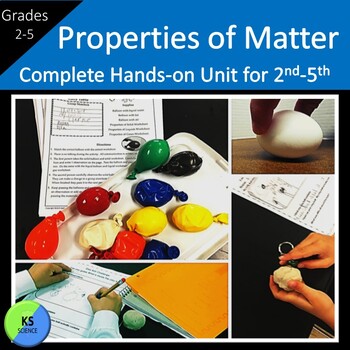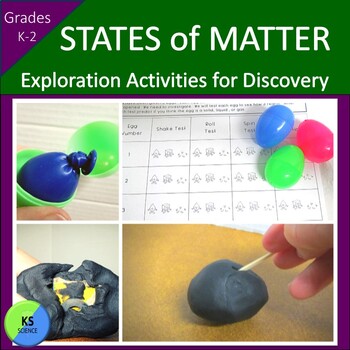Using Eggs to Teach the Properties of Matter
The states and properties of matter are fundamental in science and will be revisited and expanded upon throughout a child's education. A solid first introduction, rich in hands-on experiences and discovery, is essential for fostering a lasting interest in science.
We first provide students with an opportunity to explore the three primary states of matter: solids, liquids, and gases. This unit includes four thoughtfully designed activities that allow students to build on their prior knowledge with each subsequent experiment.
Activity 1: Observing and Recording the Properties of Matter
Each group receives three balloons—one filled with air, one with liquid water, and one with ice. Using a rally table format, students pass papers around and record their observations without speaking, communicating solely through written notes. This silent challenge includes a word bank and fosters descriptive skills. Afterward, a class discussion allows us to compare and contrast the properties they recorded. What is similar? What is different?
Activity 2: Investigating the Spinning of Eggs
Activity 2: Investigating the Spinning of Eggs
Next, students delve into an intriguing investigation of how the state of an egg affects its spin. Using the scientific method, they will test a raw, a hard-boiled, and an air-filled egg to answer the question:
Does the state of an egg affect how it spins?
Students thoroughly enjoy the hands-on experience of spinning the eggs, which is a perfect fit for the NGSS Science and Engineering Practices. The most challenging part may be preparing the air-filled eggs by blowing the liquid out ahead of time, but it’s well worth the effort.Here is a video showing the spin/touch test on a raw egg.
Activity 3: Sharing Their New Knowledge
After mastering the spin/touch test, students get to share their newfound knowledge by challenging others to identify whether an egg is raw or hardboiled. Watching adults attempt to figure out the secret is always a highlight, and students take pride in teaching them the secret.
Activity 4: The Clay Ball Challenge
Finally, we conclude with the Clay Ball Challenge. By this point, students have a solid understanding of the properties of matter. They apply this knowledge to figure out what’s inside a clay ball without opening it, using only a toothpick to poke and probe. The excitement builds as they make their guesses and finally reveal the contents of their clay balls.
Finally, we conclude with the Clay Ball Challenge. By this point, students have a solid understanding of the properties of matter. They apply this knowledge to figure out what’s inside a clay ball without opening it, using only a toothpick to poke and probe. The excitement builds as they make their guesses and finally reveal the contents of their clay balls.
SHOP THIS POST
Younger Grade Level Version
More Egg Explorations
LEARN MORE








